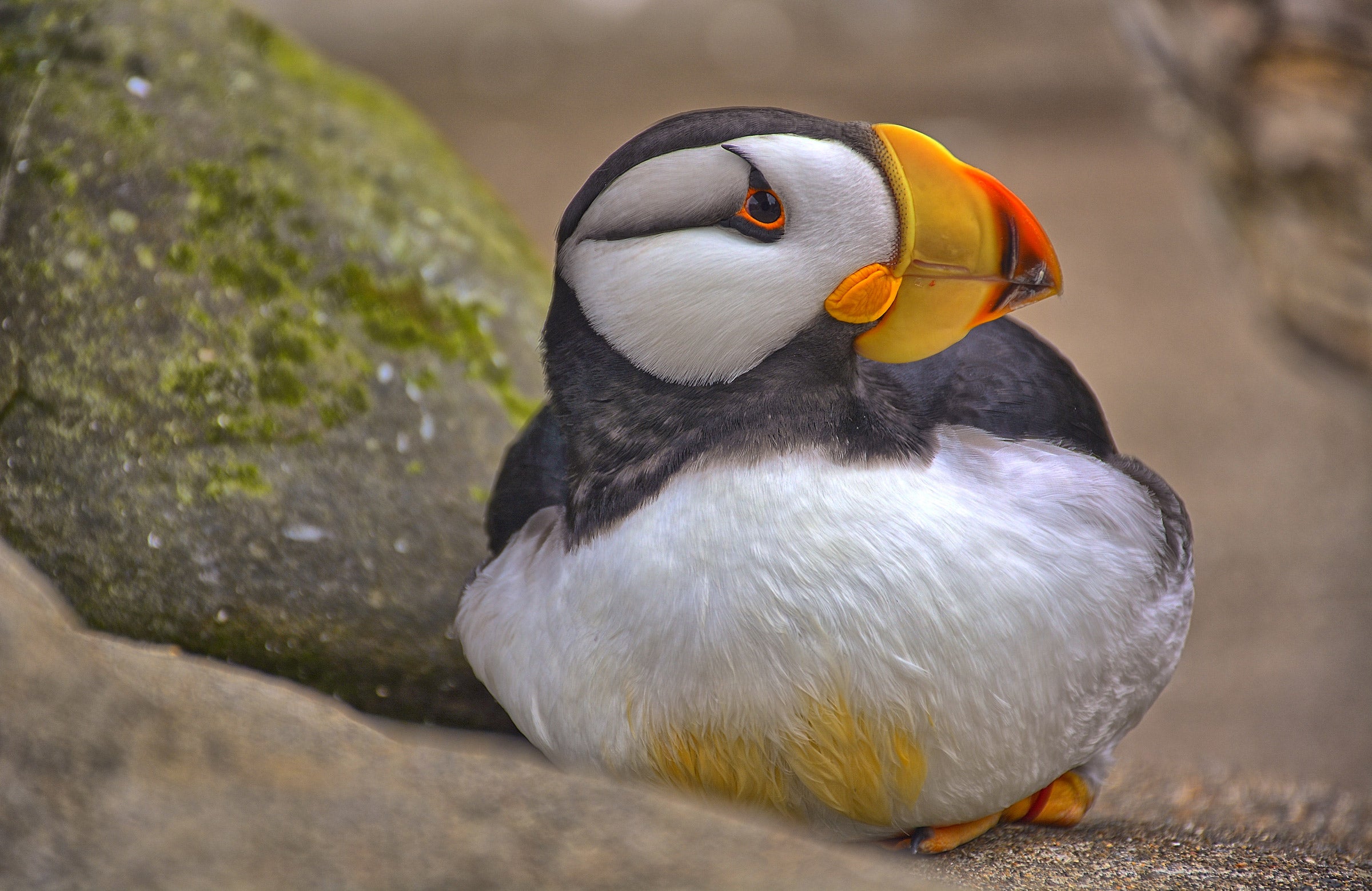
Here’s the third and final post in our puffin series, highlighting the rugged and striking Horned Puffin:
Horned Puffin: The Bold Explorer of the North Pacific
With its dramatic “horns,” sharp black-and-white plumage, and hardy ocean lifestyle, the Horned Puffin (Fratercula corniculata) is a bird built for the wild edges of the Pacific. It may look like its Atlantic cousin at a glance, but this puffin has a flair all its own.
Let’s meet the Horned Puffin—the puffin with attitude.
Where They Live
Horned Puffins are native to the North Pacific Ocean, with a range that includes:
- The coastal regions of Alaska, including the Aleutian and Pribilof Islands
- Parts of eastern Russia, including the Kamchatka Peninsula
- Occasionally found as far south as British Columbia
They breed on rugged islands and sea cliffs, often in rocky crevices rather than the grassy burrows used by other puffins.
How to Recognize a Horned Puffin
Horned Puffins are often mistaken for Atlantic Puffins because of their similar coloring—but there are key differences:
- Distinct black “horns”: fleshy, dark eye extensions above each eye (more visible in breeding season)
- White face set against a black “helmet” and black back
- Large, triangular orange-yellow bill, but with a more defined vertical ridge
- Bright orange feet, like other puffin species
They’re slightly smaller than Tufted Puffins and about the same size as Atlantic Puffins.
Diet and Hunting Style
Horned Puffins are agile divers that pursue prey below the surface. Their diet includes:
- Fish like herring, smelt, and sand lance
- Squid and crustaceans
They use rapid wingbeats to power themselves underwater and can dive as deep as 100 feet in search of a meal.
Nesting and Pufflings
Unlike their burrow-digging relatives, Horned Puffins typically nest in:
- Natural rock crevices
- Cliff ledges or among boulders
They lay one egg per season, and both parents incubate and feed the chick. After several weeks, the fledgling puffin heads to sea alone, where it will remain until it’s old enough to return and breed.
Conservation Outlook
The Horned Puffin is listed as Least Concern, and its global population remains stable. However, certain threats exist:
- Plastic pollution: Puffins have been found with plastic in their stomachs.
- Fishing nets and oil spills: Dangerous to seabirds that rely on pristine waters.
- Climate change: Alters ocean food webs and fish availability.
Horned Puffins are less studied than other species, making conservation research important to ensure they remain healthy and widespread.
Fun Puffin Fact
Horned Puffins often rest far out at sea, floating alone or in small rafts. They’re so at home on the water that they can go months without touching land outside the breeding season.
Puffin Species Recap
With this post, we’ve now met all three members of the puffin family:
| Puffin | Range | Standout Feature | Nesting Style |
|---|---|---|---|
| Atlantic | North Atlantic | Colorful beak, orange feet | Grass burrows |
| Tufted | North Pacific | Yellow head plumes | Burrows in soil/cliffs |
| Horned | North Pacific | Black “horns” over eyes | Rocky crevices |
Each species has adapted to life at sea in remarkable ways, and all three are iconic reminders of the wild beauty of the northern oceans.
Sources:
- [1]: National Audubon Society – Horned Puffin
- [2]: Alaska Department of Fish and Game – Horned Puffin
- [3]: BirdLife International – Fratercula corniculata
More photos below ↓









Disclaimer: This blog post is for edutainment purposes only and may not be entirely accurate.






